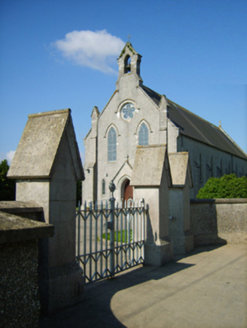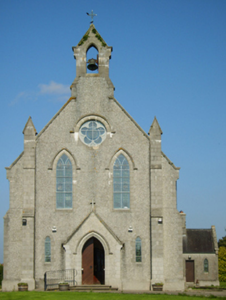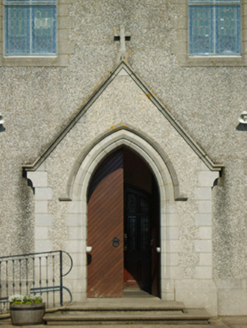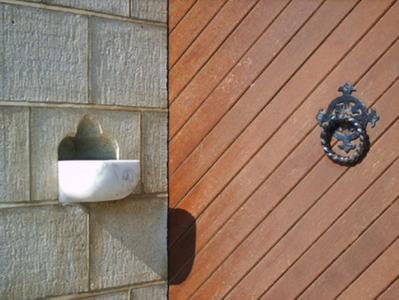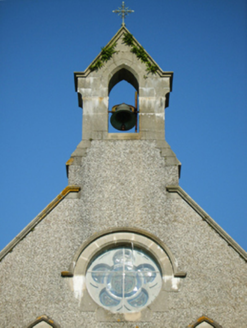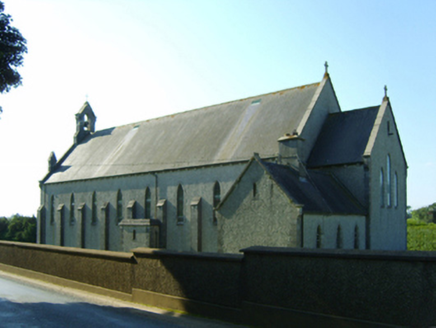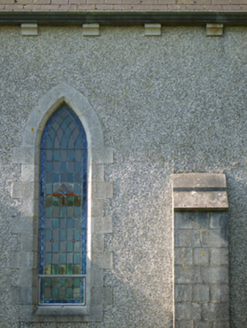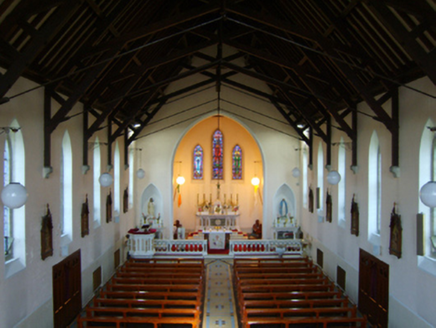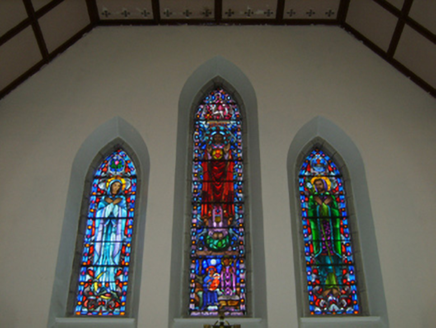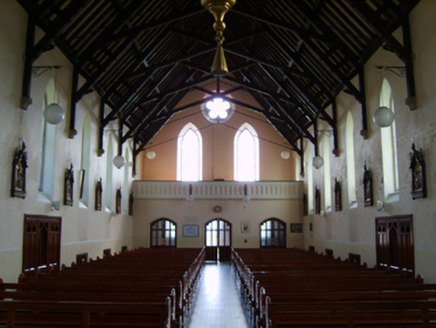Survey Data
Reg No
15702706
Rating
Regional
Categories of Special Interest
Architectural, Artistic, Historical, Social, Technical
Previous Name
Saint John's Catholic Church
Original Use
Church/chapel
In Use As
Church/chapel
Date
1945 - 1955
Coordinates
307046, 137665
Date Recorded
08/01/2008
Date Updated
--/--/--
Description
Detached nine-bay double-height Catholic church, designed 1948; built 1949-51; opened 1951, on a rectangular plan comprising eight-bay double-height nave opening into single-bay double-height chancel (west). Pitched slate roofs with clay ridge tiles, "Cavetto" coping to gables on "Cavetto" kneelers with Cross finials to apexes including "Cavetto" coping to gable to entrance (east) front on "Cavetto" kneelers with drag edged ashlar buttressed gabled bellcote to apex framing cast-bronze bell, and cast-iron rainwater goods on "Cavetto" consoles retaining cast-iron downpipes. Gritdashed roughcast walls on chamfered cushion course on rendered plinth with tuck pointed drag edged ashlar buttresses including tuck pointed drag edged ashlar buttresses to corners having "slated" coping; gritdashed roughcast surface finish to entrance (east) front on chamfered cushion course on rendered plinth with tuck pointed drag edged ashlar gabled stepped buttresses having "slated" coping. Lancet window openings with drag edged block-and-start surrounds having chamfered reveals framing fixed-pane fittings having leaded stained glass margins centred on leaded stained glass panels. Lancet "Trinity Window" to chancel (west) with drag edged block-and-start surrounds having chamfered reveals framing storm glazing over fixed-pane fittings having leaded stained glass margins centred on leaded stained glass panels. Pointed-arch door opening to entrance (east) front with two precast concrete steps, drag edged block-and-start surround having chamfered rebated reveals with hood moulding over framing diagonal timber boarded or tongue-and-groove timber panelled double doors. Pair of pointed-arch window openings with cinquefoil "Rose Window" to gable, drag edged block-and-start surrounds having chamfered reveals with hood mouldings over framing storm glazing over fixed-pane fittings having leaded stained glass margins centred on leaded stained glass panels. Interior including vestibule (east); pointed segmental-headed door openings into nave with glazed timber panelled double doors; full-height interior open into roof with choir gallery (east) below stained glass windows (----), tiled central aisle between cruciform-detailed timber pews, Gothic-style timber stations between stained glass windows (1951), exposed braced scissor truss timber roof construction on cut-granite "Cavetto" corbels with wind braced rafters to ceiling on carved timber cornice, Gothic-style pulpit on an octagonal plan with Classical-style baptismal font on a circular plan, and carpeted stepped dais to sanctuary (west) retaining arcaded communion railings with pointed-arch chancel arch framing cut-veined white marble panelled high altar below stained glass memorial "Trinity Window" (----). Set in landscaped grounds with piers to perimeter having roll moulded gabled capping supporting cast-iron double gates.
Appraisal
A church erected to a design (1948) by Ashlin and Coleman (formed 1903) of Dawson Street, Dublin (Irish Builder 1948, 934), representing an integral component of the mid twentieth-century ecclesiastical heritage of County Wexford with the architectural value of the composition, one evoking comparisons with the Ashlin and Coleman-designed Catholic Church of Christ the King (1937-9), Pollpeasty (see 15702409); and Catholic Church of the Assumption (1951-3), Rosbercon (see 15605244), confirmed by such attributes as the rectilinear plan form, aligned along an inverted liturgically-correct axis; the slender profile of the openings underpinning a stolid "medieval" Gothic theme with the chancel defined by an elegant "Trinity Window"; and the handsome bellcote embellishing the roofline as a picturesque eye-catcher in the landscape. Having been well maintained, the elementary form and massing survive intact together with substantial quantities of the original fabric, both to the exterior and to the interior where contemporary joinery; stained glass supplied (1951) by A.W. Lyons and Company of Westland Row, Dublin (Irish Builder and Engineer 1951, 980); a restrained high altar; and the jewel-like Redmond Memorial "Trinity Window" attributable to Earley Studios Limited (closed 1975) of Dublin, all highlight the artistic potential of the composition: meanwhile, an exposed timber roof construction pinpoints the engineering or technical dexterity of a church making a pleasing visual statement in a rural village setting.
